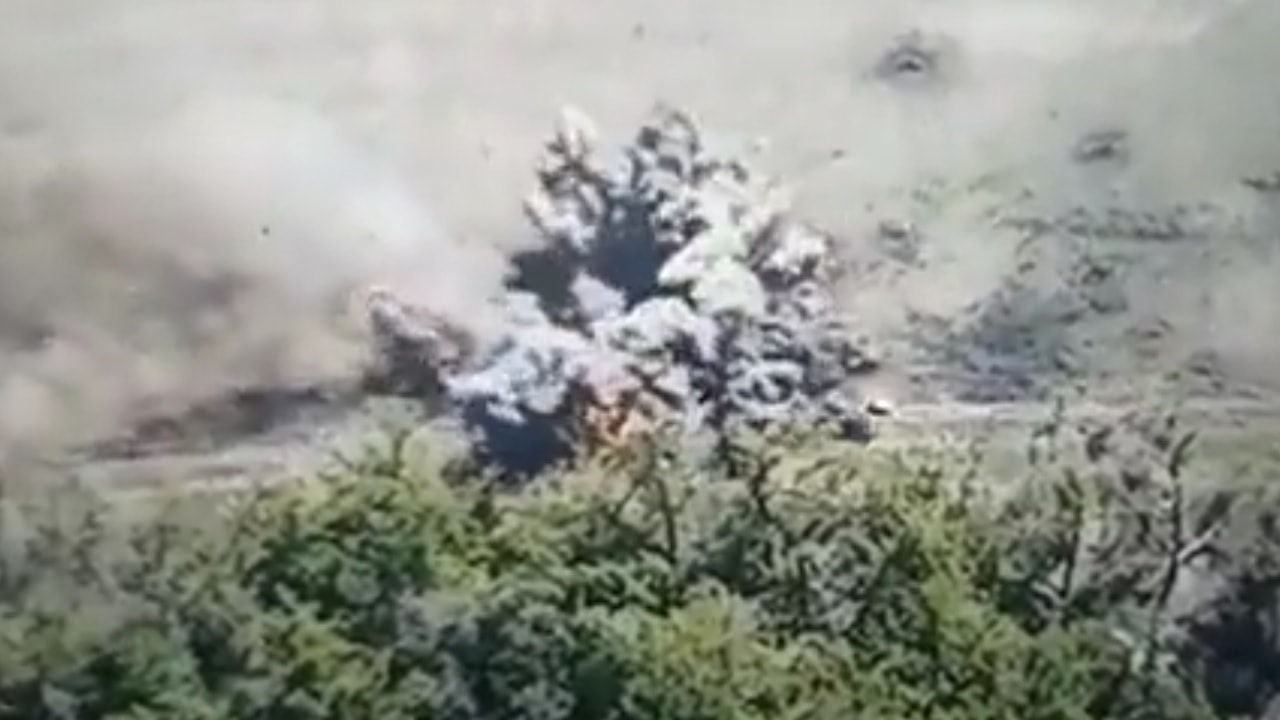A 13-second video clip, which has been shared across social media, purportedly shows a Russian BMP-2 infantry fighting vehicle (IFVs) destroyed in the Donbas region after driving through a Ukrainian anti-vehicle minefield. In the video, the BMP-2 was seen taken out of action after its driver apparently steered into a mine.
“A Russian BMP[-2] IFV ran into Ukrainian AT mines in the East- swiftly followed by another making the same mistake,” Ukraine Weapons Tracker (@UAWeapons) tweeted while sharing footage of the video, which has been seen more than 235,000 times since it was first posted on TikTok on Monday.
The BMP-2 could be seen approaching another destroyed Russian vehicle, which was also believed to have hit a Ukrainian mine that was placed in the field. After striking the mine, an explosion could be seen followed by heavy smoke and dust that came out of the wrecked vehicle.
Ukraine’s military estimates that Russia has lost more than 1,200 tanks since the invasion began in February, while intelligence chiefs believe that more than a third of its ground forces have been obliterated, the Mirror reported.
#Ukraine: A Russian BMP[-2] IFV ran into Ukrainian AT mines in the East- swiftly followed by another making the same mistake. pic.twitter.com/UOhrSn8ITB
— 🇺🇦 Ukraine Weapons Tracker (@UAWeapons) May 16, 2022
The Soviet-Era IFV
The BMP-2 (Boyevaya Mashina Pekhoty) is a second-generation, amphibious IFV that was first introduced in the 1980s, and improved on the BMP-1 that had been first employed in the late 1960s. In the Soviet Army, BMPs were typically issued to the motor rifle battalions of tank regiments.
The 14-ton tracked vehicle has a crew of three and can carry up to seven infantry soldiers. It is armed with a 30mm autocannon and a Konkurs launcher, while welded steel armor provides all-round protection against 12.7 mm rounds. However, it offers little protection from landmines – as noted in the recent video!
Use of Landmines
Ukraine has been effectively deploying landmines to counter Russian forces and has forced the Kremlin’s armored columns into engagement areas where they could be vulnerable to man-portable anti-tank weapons such as the U.S.-made FGM-148 Javelin and British NLAW.
“That’s one of the reasons why you see column after column of Russian vehicles that are destroyed. So anti-tank or anti-personnel mines are very effective,” Army General Mark Milley, chairman of the Joint Chiefs of Staff, told the Senate Armed Services Committee in early April.
Despite the successes that the landmines have brought Kyiv, there are concerns that those ground-based explosive weapons could pose a problem for civilians for years, perhaps even decades to come.
Anti-personnel landmines are prohibited under the Convention on the Prohibition of the Use, Stockpiling, Production and Transfer of Anti-Personnel Mines and on Their Destruction (or Mine Ban Convention – also known as the Ottawa Treaty), adopted in 1997. More than 150 countries have joined this treaty, including Ukraine and most of NATO.
Russia Employing Anti-Personnel Mines
There have been reports that Russian forces fighting in Ukraine have used banned antipersonnel mines in the eastern Kharkiv region, Human Rights Watch has claimed. Russia is known to possess those newly deployed landmines, which can indiscriminately kill and maim people within an apparent 16-meter range.
“Countries around the world should forcefully condemn Russia’s use of banned antipersonnel landmines in Ukraine,” said Steve Goose, the arms director of Human Rights Watch. “These weapons do not differentiate between combatants and civilians and leave a deadly legacy for years to come.”
Ukraine does not possess that particular type of landmine or its delivery system.
Now a Senior Editor for 1945, Peter Suciu is a Michigan-based writer who has contributed to more than four dozen magazines, newspapers and websites. He regularly writes about military hardware, and is the author of several books on military headgear including A Gallery of Military Headdress, which is available on Amazon.com. Peter is also a Contributing Writer for Forbes.

